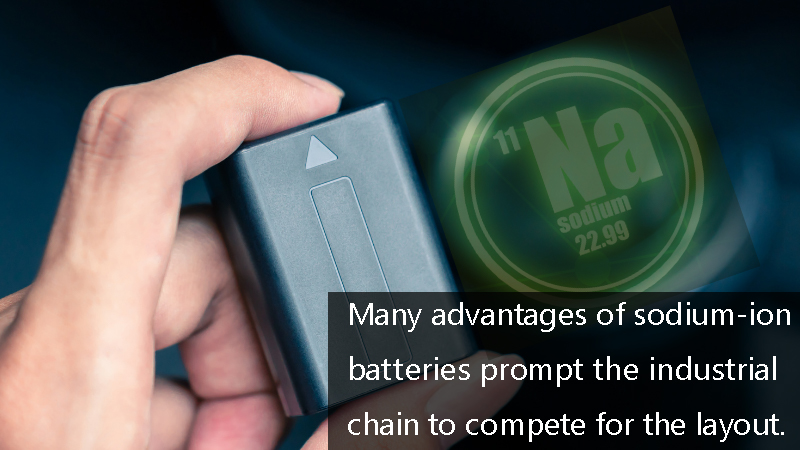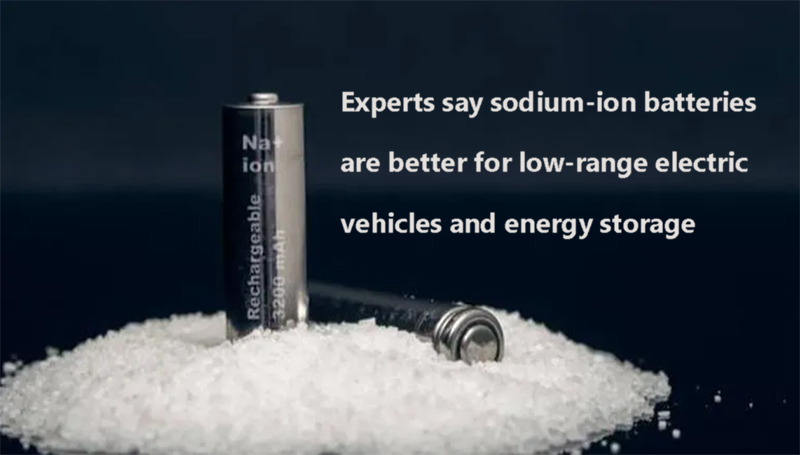
Main content:
Recently, sodium battery concept stocks have continued to be sought after in the capital market. In the first two trading days, the sodium-ion battery sector strengthened as a whole, with an increase of 1.54% and 1.56% respectively, and individual stocks in the sector rose one after another. Behind the overall strength of the sodium-ion battery concept stocks sector is that the price of raw materials for lithium batteries continues to rise, and resource reserves are tight. The industry is paying more and more attention to sodium-ion batteries that work similar to lithium-ion batteries.
In mid-July, the Chinese government officially issued the first batch of sodium-ion battery industry standard plans; In early August, CATL, ranking the first among top10 sodium-ion battery companies, stated that it is committed to promoting the industrialization of sodium-ion batteries in 2023. It is predicted that 2023 is expected to become the first year of industrialization or mass production of sodium batteries. However, an expert said that the real large-scale commercialization of sodium-ion batteries lies in the market acceptance and the perfection of the industrial chain, and the future market space depends on whether it can play its characteristic advantages.
1.Many advantages of sodium-ion batteries prompt the industrial chain to compete for the layout
From the periodic table of elements, sodium and lithium belong to the main group of alkali metals and have similar physical properties to lithium. Lithium ranked third, and sodium ranked 11; The sodium-ion battery mainly relies on the movement of sodium ions between the positive and anodes to work. Similar to the working principle of the lithium-ion battery, the working principle of the battery is a rocking chair (battery). From the perspective of product structure, the electrode materials of sodium ion batteries are mainly sodium salts, the cathode is iron manganese copper and ternary system, the anode is hard carbon, and the electrolyte is sodium ion compound.
From the perspective of the working process, during the charging and discharging process, Na+ intercalates and deintercalates back and forth between the two electrodes. During charging, Na+ is deintercalated from the cathode and intercalated into the anode through the electrolyte, and the opposite is true during discharge. In fact, except for the requirements for sodium metal and sodium salt, the solvent of sodium ion battery is not much different from that of lithium ion battery; the separator, shape packaging, and preparation process are basically the same as those of lithium ion battery. Experts say that sodium resources are very rich compared to lithium resources, for example, there is a lot of sodium in seawater.
Sodium-ion batteries have economic and cost advantages. If the price of lithium carbonate is 150,000 RMB/ton and the price of sodium carbonate is 2,000 RMB/ton, the material cost of sodium-ion batteries is 30%-40% lower than that of lithium-ion batteries. Under the favorable advantages, the upstream and downstream of the industrial chain began to compete for the layout of sodium-ion batteries. For example, CATL released the first-generation sodium-ion battery in July last year, and has repeatedly stated that it will achieve industrialization in 2023; In March this year, HUA YANG CO., TD and HiNa BATTERY deployed a 2,000-ton sodium-ion anode material production line;

In April 2022, LI-FUN TECHNOLOGY released a new generation of sodium-ion batteries; In July, the first production line of the HiNa BATTERY 1GWh sodium-ion battery project was completed in Fuyang, Anhui; RONBAY TECHNOLOGY plans to have a production capacity of 36,000 tons/year of sodium-electric cathode materials in 2023; Transimage established a sodium-ion battery research institute in August 2022. According to incomplete statistics, more than 60 companies including CATL, GREAT POWER, LI-FUN TECHNOLOGY, NATRIUM, ZOOLNASH, HiNa BATTERY, Transimage, RONBAY TECHNOLOGY, HUA YANG CO., TD, QIAN LIFANG, etc, involving sodium ion batteries, cathode and anode materials, electrolytes, aluminum foil, sodium resources, etc.
2.The rising prosperity of battery aluminum foil makes the market in short supply
According to the analysis, in addition to sodium element, the cost advantage of sodium-ion batteries is also related to the selection advantage of current collector materials; because aluminum current collectors are prone to alloying with lithium at low potentials, which affects the overall performance of the battery. Aluminum foil is an aluminum rolled material with a thickness of less than 0.2 mm. Battery aluminum foil refers to the lithium battery positive current collector aluminum foil, which is not only the current collector electrode, but also the carrier of the lithium battery positive electrode material. The sodium battery can use aluminum foil for both the positive and negative electrodes.
QIAN LIFANG has publicly stated that the company's battery aluminum foil orders have grown steadily this year, and the product supply is in short supply; In July this year, QIAN LIFANG will increase the production capacity of battery aluminum foil by 2.7 billion RMB; WANSHUN also said that since the second half of last year, the market demand for battery aluminum foil has seen rapid growth, and the market is in short supply, and it is stepping up the progress of the battery aluminum foil expansion project. Not only that, but the processing fee of battery aluminum foil continues to rise. The pricing of battery aluminum foil in China generally adopts the calculation method of aluminum price + processing fee.

According to the data, as of the end of July, the processing fee of 15-micron lithium battery aluminum foil was 18,000 RMB/ton, while the processing fee of 12-micron reached 20,000 RMB/ton. The continuous rise in demand for battery aluminum foil and the continuous rise in processing fees are related to market supply and demand. On the one hand, the installed capacity of power batteries continues to increase. Data shows that in the first half of this year, China's power battery shipments exceeded 200GWh, and the initial calculation of the amount of aluminum foil will exceed 90,000 tons; On the other hand, the capacity expansion of battery aluminum foil requires a certain period of time.
According to analysis, the construction period of aluminum foil production capacity is generally 2-3 years. At the same time, sodium-ion batteries have further pushed up the demand for battery aluminum foil. Each GWh sodium battery requires 700-1000 tons of aluminum foil, which is more than 2 times that of lithium batteries. Industry insiders believe that since both positive and negative current collectors are made of aluminum foil, the high heat of sodium-ion batteries also gives the aluminum foil industry a certain space for imagination. With the acceleration of the industrialization process of sodium-ion batteries, battery aluminum foil will also usher in new increment space. It is estimated that the battery aluminum foil market space may be 31.1 billion RMB in 2025.
3.Experts say sodium-ion batteries are better for low-range electric vehicles and energy storage
Although sodium-ion batteries have outstanding advantages and increase the consumption of current collector aluminum foil, sodium-ion batteries still have pain points such as energy density and poor cycle life. Na-ion batteries have no problem in terms of resources, but their energy density is lower than that of lithium-ion batteries, and there is a big gap with lithium-ion batteries in the application field that pays attention to energy density, so sodium-ion batteries have done little in terms of industrialization; it is also difficult to meet the requirements of energy storage and electric vehicles in the field of cycle life.

In addition, the industrial chain integrity of sodium-ion batteries is currently relatively poor. It is reported that the current cycle life of sodium-ion batteries is about 65% of that of lithium-ion batteries, and the energy density is 20% lower than that of lithium-ion batteries. As for the future use scenarios of sodium-ion batteries, industry insiders said that the first-generation sodium-ion batteries are likely to be the first to be installed on low-end new energy vehicles with low cruising range. Lower production costs and higher safety performance are exactly what This type of car manufacturers value.
In the opinion of experts, in the initial application stage, sodium-ion batteries are more suitable for low-range pure electric vehicles and energy storage fields, but it is not ruled out that the energy density will be improved with technological innovation in the future; it still does not meet the requirements of mass production, and it is expected that it will be installed on new energy vehicles at least 2-3 years, and the time point for application in the field of energy storage may be relatively early.
Another expert believes that in the future, sodium-ion batteries are more suitable for pure electric vehicles with low cruising range, and are mainly used in the field of energy storage(including home energy storage). It is estimated that in 2025, the penetration rates of sodium-ion batteries in the field of electrochemical energy storage, electric two-wheelers and A00-class electric vehicles will be 15%, 5%, and 10%, respectively. However, sodium-ion batteries are still in the early stage of the industry now, and it is difficult to judge the future trend. It can only be said that sodium-ion batteries are a development direction in the future.
Related article: lithium vs sodium battery, top 10 battery aluminum plastic film brands